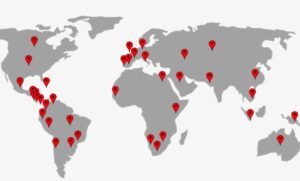Water-aided colonoscopy encompasses different techniques that entail infusion of water as an adjunct to or in lieu of gas insufflation to distend the lumen during the insertion phase.
In water immersion (WI) water is infused to facilitate cecal intubation, with limited use of insufflation when necessary. Opaque water is removed as needed to aid progression without maximizing cleanliness, preparation remnants can be used to aid insertion. Some residual ponds of water must be aspirated to clean the lumen during withdrawal.
Water exchange, modified from WI, entails substitution of all colon content with a layer of clear water. During the withdrawal phase of WE the lumen is almost perfectly clean.
With both techniques withdrawal is carried out using insufflation, as usual.
Several randomized controlled trials and meta-analyses with different designs showed that compared with usual gas insufflation colonoscopy WI and WE significantly decrease pain score and sedation requirement (WE is the least painful insertion technique), and increase cecal intubation rate. Compared with gas insufflation colonoscopy, patients undergoing colonoscopy with WI or WE report higher willingness to repeat the procedure in the future.
The impact of WAC on colonoscopy pain and sedation and might be relevant in many different parts of the world, where colonoscopies are performed without sedation or using on-demand moderate sedation.
Uniquely, WE significantly increases colon cleanliness, adenoma detection rate (also in the proximal and right colon and in patients prepared with split-dose preparation), and Sessile Serrated Polyps detection rate. This might be relevant for colorectal cancer screening.

- Society

Membership
Support our mission by becoming a member

Public Health Policy Center
Explore the society's public health initiatives

Meet the community
See what our members have been working on
- Journal
- Author Center
- Membership